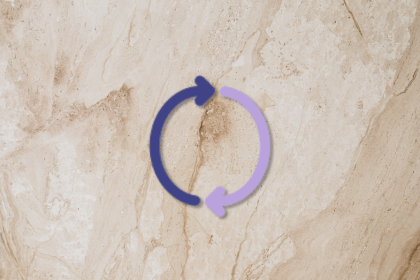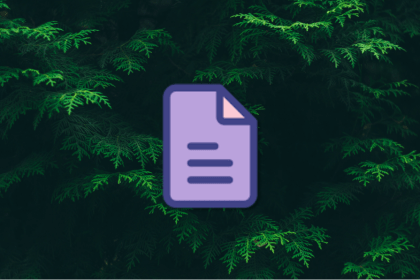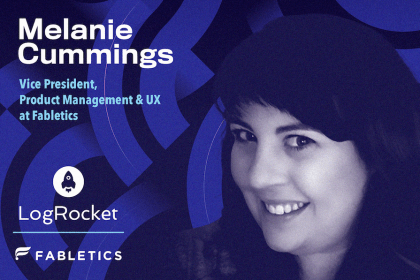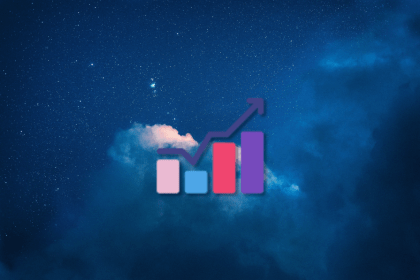Roger Wigenstam is a lifelong builder. He taught himself how to code as a child after his father brought home a computer from work. It wasn’t long before he was writing software for his dad’s clients — some of which, amazingly, is still in use to this day.

Since then, Roger has led product management and engineering teams at Oracle and been nominated and won awards for innovations in cybersecurity. More recently, he led the product and UX efforts as VP of Product Management at OneSpan. He currently works with clients as a strategic advisor and fractional CPO through Quantum-Leap.ai, a business he started almost two years ago after a life-changing event.
In our conversation, Roger breaks down his approach to identifying and validating ideas and opportunities through diligent customer, competitor, and market research. He also opens up about a mountain biking accident and how his recovery reaffirmed his passion for the industry and reconnecting with those who helped him along the way.
After Oracle, I went to a data security startup for a few years. During my time there, we launched two SaaS offerings for protecting structured and unstructured data, which, to my knowledge, were the first of their kind.
I really wanted to find a way to address the long sales and implementation cycles I had observed at Oracle. I had a friend and former manager who was working at Twilio at the time. Twilio was one of the original companies that put some of what we now know as PLG in place. I was really inspired by what they had done, and I wondered whether we could do something similar for data security and authorization.
I set some KPIs and goals for the team early in the planning process. From the point that someone hit the signup button on our website, I wanted it to take no more than 15–30 minutes for a customer to get a basic integration working — something that, in the past, typically took weeks or even months, depending on the use case. As part of this effort, we did a lot of work to simplify and automate the onboarding and configuration process and provide easy-to-follow quick-start guides with integration patterns and best practices. We also built integrations into major platforms and ecosystems, such as Microsoft Office and Dynamics 365, SAP, and others to remove the need for custom development work.
I also worked with the NIST Cybersecurity Center of Excellence to formalize some of these integration patterns into a best practice guide they released for the broader industry. The startup was last year recognized as a leader in an analyst report based on what we put in place back then, which is great validation.
It’s easy to fall in the trap of using vanity metrics for example, number of users. Those can sometimes be good metrics, but they don’t really tell you whether customers are getting value from your solution. You have to look at what you’re offering, the problems you’re solving, and how customers are using the solution.
Two key metrics for us were the number of resources we were protecting and authorization decisions we were servicing. The more data we were protecting and authorization decisions we served, the more our customers were using our solution and getting value from it.
OneSpan is a bit of a different story.
When I joined, the company was called Vasco Data Security. They were one of the top three hardware token vendors. A hardware token is a small device you use to access your bank account and do online transactions in a secure manner. We sold hundreds of millions of tokens worldwide and had a fantastic moat around our business, but we saw the need for those devices slowly going away as we all have smartphones in our pockets.
The environment for our customers was also changing. Banks and other FIs, which were our primary targets, were seeing shifts in consumer behavior and facing increasing competition from nimble fintechs and startups that were trying to eat their lunch. New regulations were being imposed in different regions of the world while banks were also battling with new types of fraud, adding more complexity for our customers.
Our clients were looking for ways to be able to quickly adapt and face all these challenges. Very simply put, the vision was to provide everything that financial services and other regulated industries would need to provide an easy to use, secure customer experience, and help prevent fraud. As part of this, I wanted to allow customers to be able to retain and leverage the investment they had already made with us when they looked to adopt our new solutions.
To address these goals, we ended up launching an entire suite of SaaS, mobile, and hardware solutions. We were fairly early adopters of AI/ML, which, despite some challenges, allowed us to address certain customer use cases more efficiently. This earned us “Company of the Year,” “Best Fintech Solution,” and other awards.
To start with, it’s really important that you have a crisp and clear vision. This is your North Star. You want to be looking, say, three to five years out. Our industry moves too fast to look beyond that timeframe. You can put the vision together by yourself, but you’ll get the best result if you involve stakeholders from across the company.
There’s a set of questions you should ask yourself as you’re putting together the vision. For example, who do we want to be and what is our purpose? What markets do we want to serve? That means thinking about the customers, industries, geographies, and use cases you want to support. You need to look at trends, regulations, and new technologies on the horizon as well as the competitive landscape. You also need to look inward at your own organization and what you have today: what are the strengths and unique capabilities you can take advantage of?
Once you have agreement on the vision, it is critical that you communicate this frequently to everyone in the company, or you may not get the results you are looking for. With your vision in place, you also need a strategy for how to get there. This involves major initiatives, goals, milestones, go-to-market, etc. Maybe you’re lacking in certain areas, and you need to address those through new investments or other means.
Without a clear vision and strategy, how do you know you’re making the right decisions and are on the right track?
First of all, you have to know your customers. These days, we talk about user empathy, the need to listen to your customers and try to understand their situation, problems, and needs. And it’s not only what customers are actually telling you; you need to try to understand the reason they’re saying what they are saying and where they are coming from. This can help you uncover important insights and follow-up questions.
It’s also really important to stay ahead of what’s happening in the market. As an example, every day I spend time doing research and looking at advancements in the broader software industry, and even industries that have nothing to do with what I do. I do this to get ideas and inspiration, to see what other people are thinking and what I can learn from them.
Competitive research is also important. You don’t want to build a clone or “me too” product, but competitors can have great ideas that you can further improve on, and some things are just table stakes.
If you do your homework, you can combine your instincts and intuition with the data you’ve collected and come up with some truly unique ideas. Even the best idea still needs to be validated if it is going to require significant investment as part of your roadmap.
Any roadmap needs to include three buckets. One to cover defects, architectural improvements, operational efficiencies etc. Another one for tactical items to support customer and sales requests and so on. And the third is your strategic priorities that will take you closer to achieving your vision and really move the needle. The ratio between those three will depend on where you are in the product lifecycle, maturity, etc. As for prioritization within those buckets, this is a bit of an art as well as a science. Prioritization frameworks such as RICE can help, but you have to use your judgment and handle exceptions as they come up.
Developing software is expensive, so validating your ideas and designs upfront is important. You need to be fairly sure that you are solving a broader problem and that people are going to be willing to pay for the solution. Working with customers, prospects, and others to get iterative feedback on prototypes, perhaps with A/B testing, is a good way of getting validation before engaging your engineering team.
It’s also important to not release a new, unproven, product to the mass market. Speed and time to market is critical, but releasing something that’s not finished or your organization is not ready to support will cause issues and can throw revenue projections and other things out the door. That’s why you want to work with friendly clients, prospects, and cross-functional teams in your company to gather feedback and make sure things are tightened up before you start opening up the gates.
There are certainly times when you need to make hard decisions and cut corners, but you need to understand the implications, have a plan to address the situation and mitigate any potential impact, and make sure this is communicated and understood by everyone.
My approach has always been to create an environment that encourages creativity and collaboration. Having the right people on the team is critical. I want people to have ownership and autonomy, and I want them to feel safe to experiment, take calculated risks, and express ideas and opinions without judgment.
Some ideas, at first glance, can look like they’re a little bit out there, but there’s probably some merit to every idea. We all have biases, so keeping an open mind is key. Of course, you may not pursue every single idea as it needs to move you towards your vision and be prioritized against everything else.
My job is to give people opportunities to grow, make sure they have what they need, and provide input, guidance, and constructive feedback on an ongoing basis. These discussions don’t have to be hard; if no one tells you how you can do things differently or improve then how will you learn? On the other side of the coin, giving people recognition and opportunities to present their ideas is equally as important.
I was in a really serious mountain bike accident two years ago. I was on a short vacation and was riding alone in a fairly remote area. It was late in the day and I was tired, but was having so much fun I decided to do one more lap.
On my way down my pedal struck something on the side of the trail, launching me headfirst into a boulder. I didn’t have cell service and had the choice to wait for someone to find me the next day or make my way home. Despite incredible pain, I got on my bike and rode back to our cabin to get help. At the hospital the neurosurgeon told me I broke my neck and back in multiple places and was lucky to be alive. The helmet saved my life.
I really don’t know what I was thinking, but I didn’t take a single day off work. I wore a hard neck brace 24/7 and was doing Zoom calls, though I probably shouldn’t have been sitting at all. After a few months, I was still in a lot of pain, so I took time off to focus on my health and get myself back to where I am today. I’m back on my bike, but I’m a lot more careful these days and never ride when I’m tired.
As horrible as the accident was, a lot of good things came out of it. While recovering, I started my own business, Quantum-Leap.ai, acting as an advisor and fractional CPO helping clients with strategy proposals, pricing, new product capabilities, pitch decks, and other initiatives. I’ve also spent a lot time doing research and studying peak performance, quantum computing, generative AI, and other topics to keep myself ahead of the curve and to get inspiration for new ideas.
More than anything, I’m so grateful I have full mobility. If you met me in person, you would never know that I’ve gone through this experience. The only real limitation is that I have to be careful lifting heavy things.
I’ve had a lot of time to think, and the conclusion I’ve come to is that I love what I do. I was fortunate to find my passion early, and still after all these years can’t think of anything better. The advisory and consulting work is great, but my intention is to eventually get back in a full-time position as I want to be there to see the results of our efforts.
I learned a lot of things from the accident as well. One example is that there’s nothing more valuable than the relationships you have. I’ve had so many wonderful people help me get my life back. I was never good at keeping in touch with people in the past, and I’ve been on a mission to reconnect with relatives, friends, and people I’ve enjoyed working with. It’s been incredibly rewarding.
LogRocket identifies friction points in the user experience so you can make informed decisions about product and design changes that must happen to hit your goals.
With LogRocket, you can understand the scope of the issues affecting your product and prioritize the changes that need to be made. LogRocket simplifies workflows by allowing Engineering, Product, UX, and Design teams to work from the same data as you, eliminating any confusion about what needs to be done.
Get your teams on the same page — try LogRocket today.
Want to get sent new PM Leadership Spotlights when they come out?

The continuous improvement process (CIP) provides a structured approach to delivering incremental product enhancements.

As a PM, you’re responsible for functional requirements and it’s vital that you don’t confuse them with other requirements.

Melani Cummings, VP of Product and UX at Fabletics, talks about the nuances of omnichannel strategy in a membership-based company.

Monitoring customer experience KPIs helps companies understand customer satisfaction, loyalty, and the overall experience.